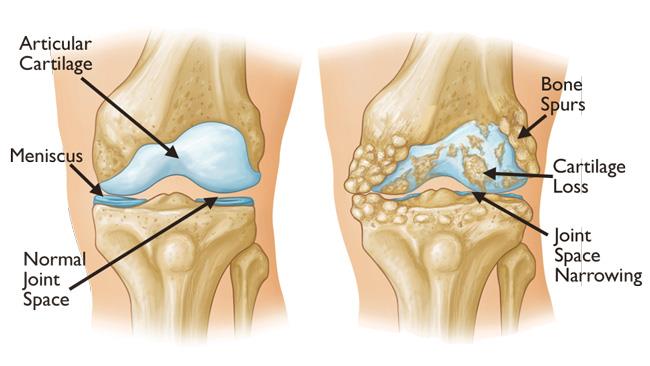Osteoarthritis is a very slow-growing joint disease that leads to cartilage destruction. It can affect all joints. About five hundred thousand people in Singapore are affected. The majority are over 65 years old. For a third of them, the knee joint suffers called gonarthrosis. Osteoarthritis of the knee is very debilitating. The exact causes of osteoarthritis are not yet fully identified.
If there is no pre-existing lesion of the joint affected by osteoarthritis, it is called primary osteoarthritis. Certain factors can favor primary osteoarthritis. These factors include aging or mechanical overload (overweight, architectural abnormality of the joint), metabolic abnormalities (diabetes, etc.), and possibly a hormonal origin. There may also be a familial predisposition.
If osteoarthritis occurs on a joint weakened by more or less old lesions or a cartilage disease, we speak of secondary osteoarthritis. Osteoarthritis can be secondary to trauma to the common, such as damage to a meniscus or cruciate ligament in the knee or an inflammatory joint disease that has damaged a joint.
Table of Contents
Stages of Osteoarthritis
Osteoarthritis of the joint increases with age, but osteoarthritis can occur more or less early and be more or less severe if there are predisposing factors.
We speak of primary osteoarthritis when the predisposing factors are not directly related to a joint lesion. We talk of secondary osteoarthritis when the affected joint’s cartilage has been previously damaged by trauma or disease.
Primary osteoarthritis: contributing factors
Sex and Hormones
Female sex hormones (estrogens) may play a protective role. Indeed, osteoarthritis of the hands and knees is more common in women after 65 than in men.
Heredity – Genetics
Specific localization of osteoarthritis, particularly the hand and the knee, could be more frequent in certain families.
Metabolic abnormalities – Obesity, Diabetes
Obesity is a significant risk factor for knee osteoarthritis (gonarthrosis). Being overweight precedes knee osteoarthritis by several years. Even moderate weight loss protects the joint (losing about 5 kg reduces the risk of gonarthrosis by 50% for ten years).
Diabetes is also an emerging risk factor. Several studies have highlighted the harmful role of excess sugar on cartilage. Some studies show that abnormalities in cholesterol, triglycerides, or hypertension could participate in osteoarthritis disease. These data require confirmation.
It is, above all, the cumulative effect of risk factors in addition to obesity that promotes osteoarthritis, particularly of the knee.
Secondary osteoarthritis: associated diseases
Diseases of the joint preceding the onset of arthrosis
Many joint disorders can be complicated, even once cured, by cartilage damage. In this case, we speak of secondary osteoarthritis.
- Joint infections and inflammatory diseases such as rheumatoid arthritis can damage all or part of the joint. After the inflammatory attack, the joint’s sequelae or “scars” evolve toward osteoarthritis.
- Similarly, we have osteonecrosis (which corresponds to more or less extensive necrosis or death of the bone located under the cartilage), which can progress to secondary osteoarthritis.
- Rare so-called overload diseases, characterized by the accumulation of different molecules in the body and particularly in the joint, lead to osteoarthritis. For example:
- Copper accumulation, as in Wilson’s disease,
- Iron accumulation, as in hemochromatosis;
- Accumulation of homogentisic acid as in ochronosis
- The so-called microcrystalline pathologies (at the origin of the formation of tiny crystals within the joints) such as chondrocalcinosis (CCA) can also frequently cause secondary osteoarthritis.
- A history of joint trauma such as fractures and dislocations or even more minor incidents can increase the risk of developing osteoarthritis. These factors have been particularly well studied in the knee for cruciate ligament and meniscus injuries.
Osteoarthritis can be secondary to injury or deformity of the joint
Certain factors will weaken the joint and promote the appearance of osteoarthritis.
- Inequality in the length of the lower limbs when it is greater than 2 cm (resulting in lameness).
- Hypermobility, morphological abnormalities such as morphological abnormalities (called hip or knee dysplasia (deformities known as genu varus or valgus, diagram, etc.) can also induce a risk of developing osteoarthritis.
Conclusion
Osteoarthritis of the knee can result from several factors, including the age and the size of an individual. Hip & Knee Orthopedic Orthopedic can help you treat and maintain the disorder.
Also Read: Why Is Knee Replacement Surgery Done.

